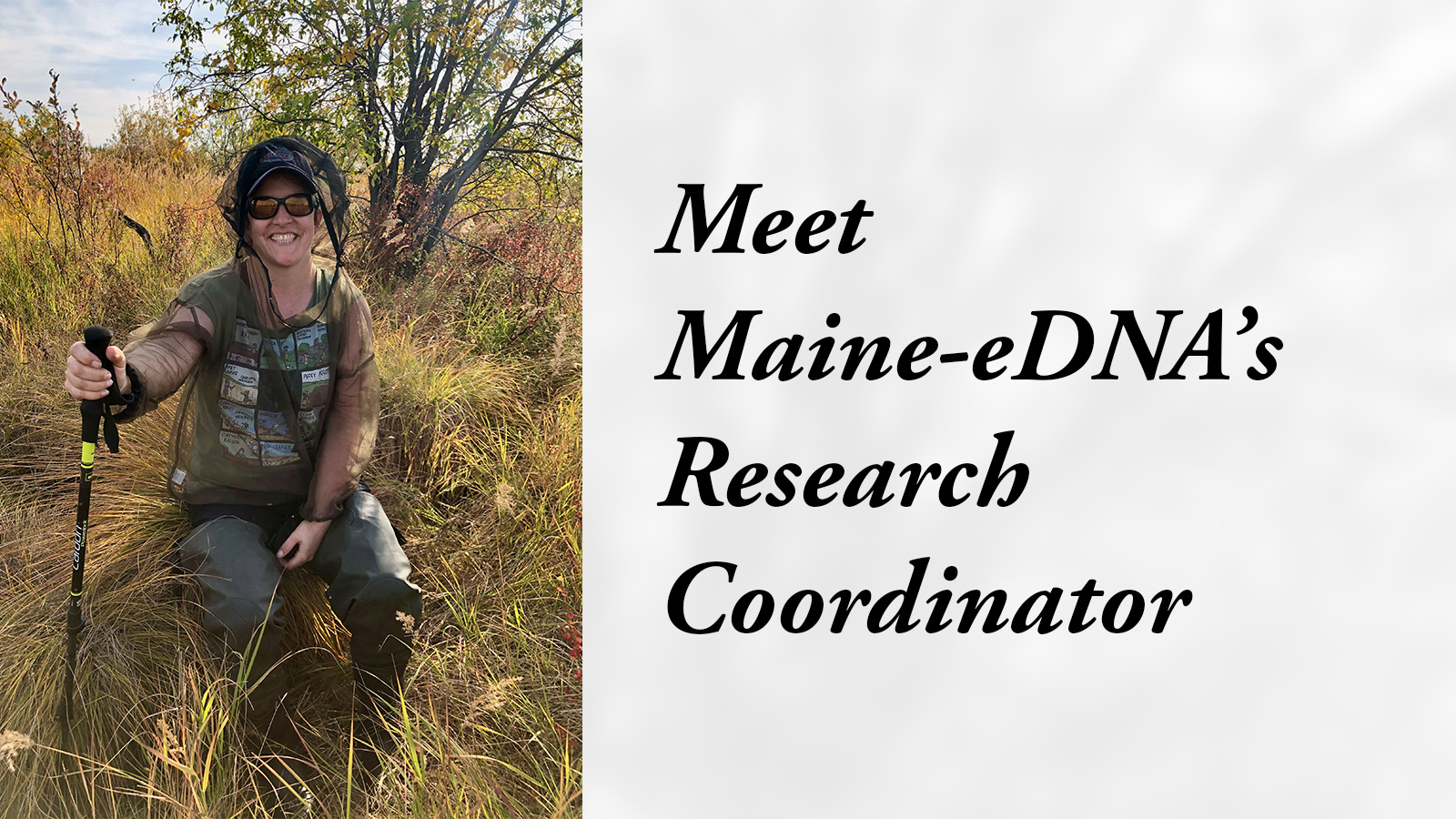
Meet Maine-eDNA’s Research Coordinator, Karen James
By Daniel Timmermann
In early 2022, Maine-eDNA brought on new research coordinator Karen James. This inclusion to the project will help Maine-eDNA coordinate the grant’s vast amount of work happening across the state. James brings with her a deep knowledge of genetics, environmental DNA (eDNA), and its application in marine and terrestrial habitats. While James is new to this position, she is not new to Maine-eDNA. James originally joined the RII Track-1 grant as a research scientist in 2020 after having worked closely with Jacquelyn Gill at the University of Maine’s Climate Change Institute, helping build a DNA reference library for the Beringian flora in Siberia.
While earning her Ph.D. in genetics at the University of Washington, James worked primarily in biomedical research. During this time, James developed an interest in evolutionary developmental biology and, while unrelated to her area of study, botany. After graduating, James started a postdoctoral position at the Natural History Museum in London, England. James explained, “The postdoc at the museum was a way for me to move into botany, evolutionary biology, and natural history generally.” During James’ time at the Natural History Museum, the institution hosted the first conference for the International Barcode of Life, an important predecessor and underpinning of eDNA, and James was part of the working group that selected the “barcode” loci for plants (the pieces of DNA by which plants would be identified in DNA barcoding applications). When James came to Maine, she worked as a staff scientist at the Mount Desert Island Biological Laboratory and later the Climate Change Institute at the University of Maine.
As Maine-eDNA’s research coordinator, James helps bring together the efforts of researchers across the state, which can be difficult on a grant as large and geographically diverse as Maine-eDNA. “On a project this big, where we have concerted and simultaneous parallel efforts like index site sampling, it is important to try and maintain consistency among different people and locations,” explained James. Maine-eDNA’s index site sampling involves researchers collecting data up and down Maine’s coastline and into the interior. All of these samples need to be collected and treated in the same way as they make their way to the Environmental DNA Lab at the University of Maine in Orono for DNA extraction and processing. This is in addition to other coordinating efforts such as equipment and infrastructure deployment and installation and facilitating communications between research teams. She also coordinates the weekly Maine-eDNA research forum during the academic year and All-Hands meetings.
James acts as a point person for everyone on the grant, ensuring they have what they need to do their research. And while James has moved into this role, she also continues to serve as a research scientist in support of the Maine Center for Genetics in the Environment (MCGE). James works on a range of research projects like one with Allison Gardner (UMaine Assistant Professor of Arthropod Vector Biology) that explores the use of eDNA as a means for monitoring mosquitoes, specifically ones that pose a potential public health risk, and another to develop a method for detecting ancient DNA in mixed-age environmental samples.
Maine-eDNA benefits greatly from the depth of experience that James brings to the grant, being someone who has been involved deeply with the eDNA field and its development for the past two decades. James explained why working in this capacity is important to her, saying, “I am really excited to be able to, with my background in DNA barcoding, continue in this trajectory using genetics to study natural history and the environment because I didn’t necessarily know I would have an opportunity to do that with my background and training.”
